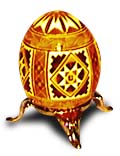|
|

|
 |

 |
13 April 1997
In British Malaya, which became Malaysia in 1963 (we became independent in 1957),
Good Friday, Easter Monday and one or two other Christian religious festivals were
nationwide holidays besides Christmas and Boxing day.
The number of Christians was hardly even 1% of the population, however, Christian
and British holidays filled most of the holidays each year because virtually all
members of the ruling class were Anglicans.They worshipped at St. Mary's Church on
the Northern end of Dataran Merdeka across the short Jalan Gombak.
 Occupying
the previous ruler's palace or bungalow was and is a common universal practice to
symbolise a transfer of power; another sign is the days the new ruler declares as
public holidays. Public holidays in Malaysia today more or less accurately reflect
the racial composition of its population. Occupying
the previous ruler's palace or bungalow was and is a common universal practice to
symbolise a transfer of power; another sign is the days the new ruler declares as
public holidays. Public holidays in Malaysia today more or less accurately reflect
the racial composition of its population.
While attending the Malay College Kuala Kangsar (MCKK) between 1948-1954, we always
had Good Friday, Easter Monday, besides the King's birthday, and, from 1952 up to
Merdeka, the Queen's birthday, and Empire Day among other Christian or British festive
days as public holidays as did the whole country. Our weekends were Friday and Sunday.
I recall we were not told about the significance of each of the Christian religious
days except for Christmas and even that I discovered its meaning through reading
Charles Dicken's Christmas Carol. It was forbidden by tradition and agreement
between the British and the Malay leaders for British teachers to attempt to teach
comparative religious studies let alone Christian divinity.The British, I must say,
followed the rule scrupulously.
The Brits were more interested in higher stakes, namely that the young Malay elites
remained passive, polite, pliant, wogs (Western oriented gentleman) or unassertive
anglophiles and more importantly apolitical rather than making them Christians.That
was the major difference (and a wise decision) with the Americans and before them
the Spaniards in the Philippines, the French in Indo-China (now Vietnam, Cambodia
and Laos) and the Dutch in the East Indies, now Indonesia.
The American-European colonialist, besides ruling and colonising them also converted
the local to Christianity.
When I was a reporter with the Straits Times (then British-owned and British-led;
several reporters were White), I picked up a bit of knowledge about Christianity
because I was also occasionally told cover Christian festivals and meetings.
That was how I learned about Good Friday, Easter Monday, Start of Lent, Ash Wednesday
and Ascension Day.
As Good Friday stuck most in my memory I shall try to recall what it is all about
(since I was compelled to honour the holiday for 19 years until Merdeka). Good Friday
is the Friday before Easter which celebrates Jesus Christ's death.Then why is it
"good?". "Good" in this context means "holy", in a
similar way Christmas is sometimes called "Good-tide" meaning "holy
tide".
It was "good" because Jesus had to die before the central moment in Christian
history, the Resurrection, could happen, and for that reason it was good, hence "Good
Friday". In any event I was told by a Catholic friend "Good Friday"
is known as "Friday of the Passion and Death of our Lord (Jesus)". It was
40 years ago when I first covered a Good Friday procession. Since then I have followed
with interest Christian traditions other than Christmas.
|

|
|
|
|